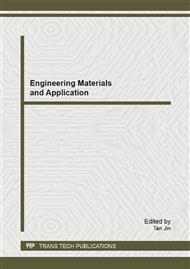p.858
p.864
p.870
p.874
p.879
p.885
p.891
p.896
p.901
Matched Field Processing Based on the Simulated Annealing
Abstract:
The matched field processing (MFP) for localization usually needs to match all the replica fields in the observation sea with the received fields, and then find the maximum peaks in the matched results, so how to find the maximum in the results effectively and quickly is a problem. As known the classical simulated annealing (CSA) which has the global optimization capability is used widely for combinatorial optimization problems. For passive localization the position of the source can be recognized as a combinatorial optimization problem about range and depth, so a new matched field processing based on CSA is proposed. In order to evaluate the performance of this method, the normal mode was used to calculate the replica field. Finally the algorithm was evaluated by the dataset in the Mediterranean Sea in 1994. Comparing to the conventional matched field passive localization (CMFP), it can be conclude that the new one can localize optimum peak successfully where the output power of CMFP is maximum, meanwhile it is faster than CMFP.
Info:
Periodical:
Pages:
879-884
Citation:
Online since:
January 2013
Authors:
Price:
Сopyright:
© 2013 Trans Tech Publications Ltd. All Rights Reserved
Share:
Citation:


